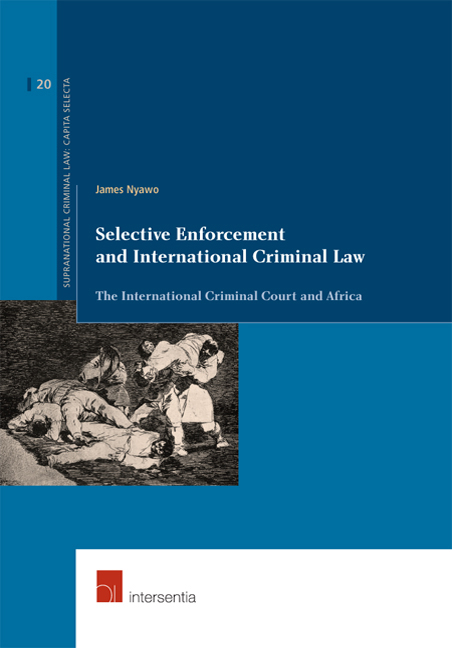Book contents
- Frontmatter
- Dedication
- Preface
- Acknowledgements
- Contents
- Epigraph
- Chapter 1 Introduction
- Chapter 2 The Establishment of the International Criminal Court, and Africa's Role and Early Support
- Chapter 3 The Office of the Prosecutor and the Politics of Selecting Targets for Prosecution
- Chapter 4 State Party Referrals, UN Security Council Referrals and the Selection of Situations
- Chapter 5 Assessing Selective Enforcement from an Admissibility Perspective
- Chapter 6 The AU and African States’ Shift from Cooperation to Non-Cooperation with the Court
- Chapter 7 African States’ Reaction to the AU's Call for Non-Cooperation with the Court
- Chapter 8 Africa and the International Criminal Court: The Lessons and Prospects
- Bibliography
- Index
Chapter 2 - The Establishment of the International Criminal Court, and Africa's Role and Early Support
Published online by Cambridge University Press: 25 September 2018
- Frontmatter
- Dedication
- Preface
- Acknowledgements
- Contents
- Epigraph
- Chapter 1 Introduction
- Chapter 2 The Establishment of the International Criminal Court, and Africa's Role and Early Support
- Chapter 3 The Office of the Prosecutor and the Politics of Selecting Targets for Prosecution
- Chapter 4 State Party Referrals, UN Security Council Referrals and the Selection of Situations
- Chapter 5 Assessing Selective Enforcement from an Admissibility Perspective
- Chapter 6 The AU and African States’ Shift from Cooperation to Non-Cooperation with the Court
- Chapter 7 African States’ Reaction to the AU's Call for Non-Cooperation with the Court
- Chapter 8 Africa and the International Criminal Court: The Lessons and Prospects
- Bibliography
- Index
Summary
The architects of the Court had to agree upon the appropriate method to establish a court that would be universally accepted, effective and independent. The draft Statute of the Court, prepared and adopted by the International Law Commission in 1994, indicates that three proposals were contemplated initially: (a) through a UN Security Council or General Assembly resolution; (b) by amending the UN Charter, which would have made the international criminal court an integral part of the UN and hence create binding obligations for all its members; and (c) through a multilateral treaty.
Although the third proposal – that of establishing the Court through a multilateral treaty – was eventually adopted, commentaries on the Draft Statute indicate that the method was initially considered unsatisfactory. There was a concern that such a statute would only be signed and ratified by states where atrocities were unlikely and would be shunned by those states where atrocities would occur.
However, as the negotiations progressed, the option of establishing the court through a multilateral treaty became widely accepted. This is because doubts were cast about the binding effect of the UN General Assembly resolutions, and the legitimacy and legality of UN Security Council resolutions in establishing a permanent international court were also discussed. It is not clear whether amending the UN Charter would have resulted in the creation of a court with universal reach and acceptance, given that the Charter reserves some rights for the five permanent members of the UN Security Council. Some delegates felt that amending the UN Charter would be a complex exercise. A multilateral treaty was preferred because, unlike a declaration, a treaty creates binding obligations for its parties. When a treaty is accepted and ratified by a state, that treaty – pursuant to its constitutional procedures – has force of law to facilitate cooperation, especially in transferring suspects. In the end, the International Law Commission's report to the UN General Assembly recommended the organisation of an international conference of plenipotentiaries where a convention on the establishment of an international criminal court was to be concluded: the Rome Conference.
- Type
- Chapter
- Information
- Selective Enforcement and International Criminal LawThe International Criminal Court and Africa, pp. 33 - 56Publisher: IntersentiaPrint publication year: 2017



